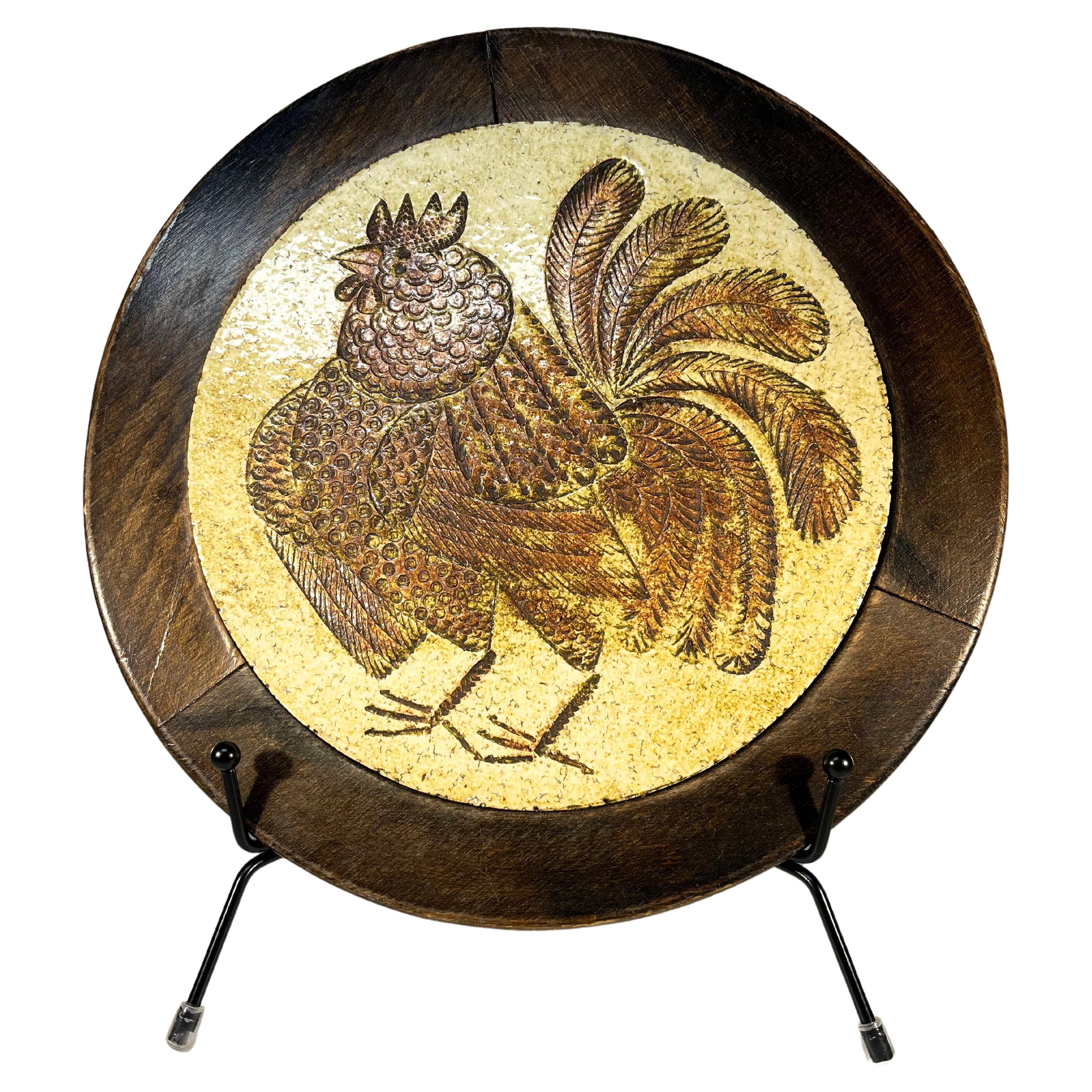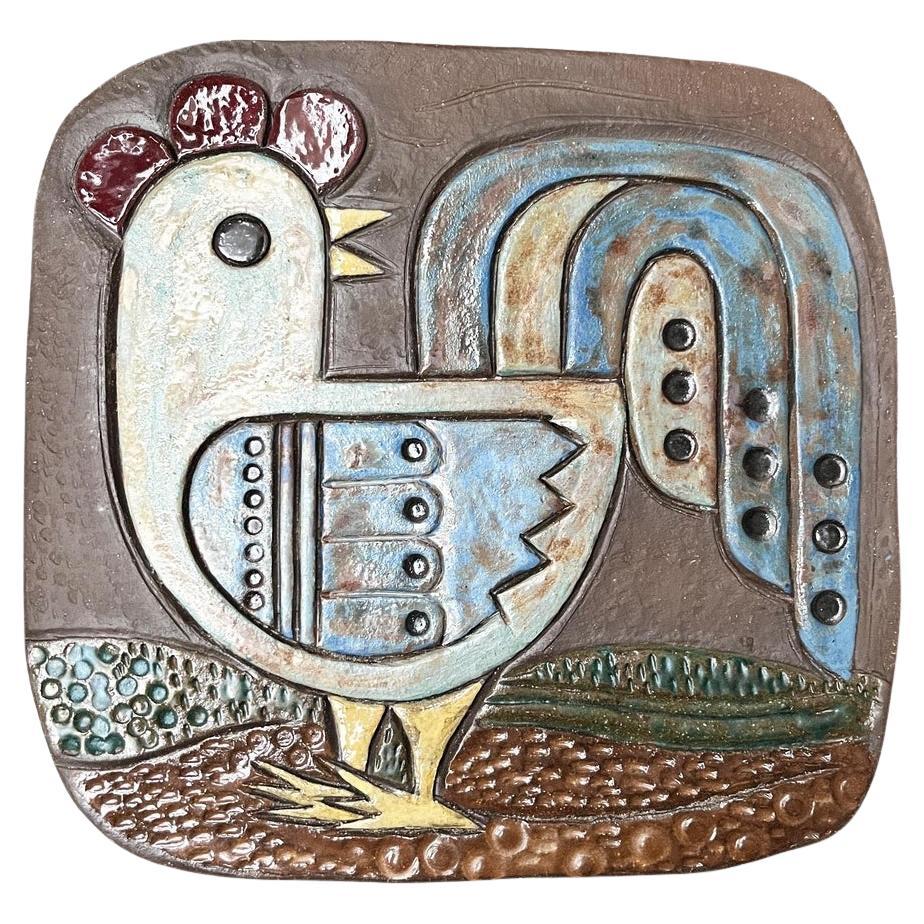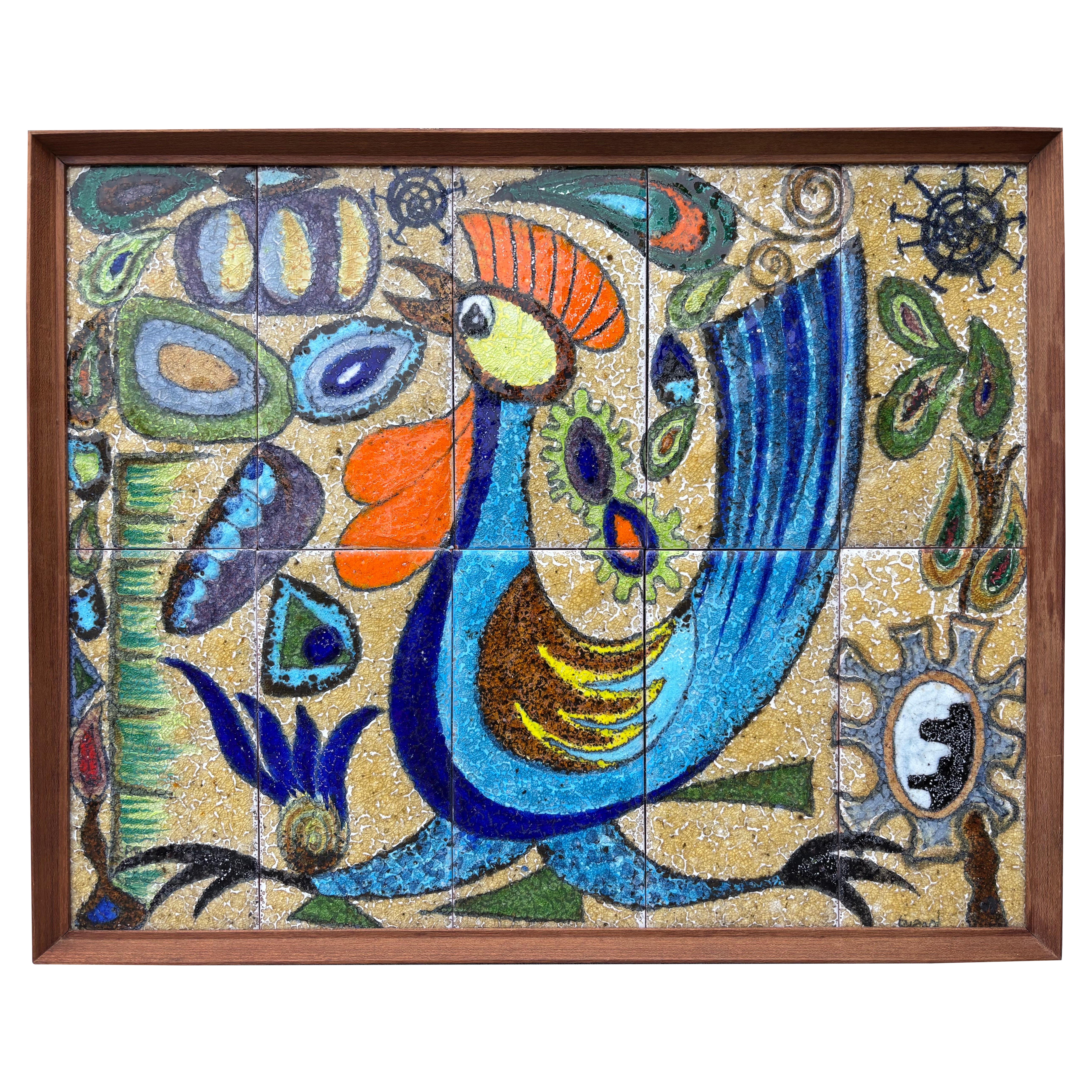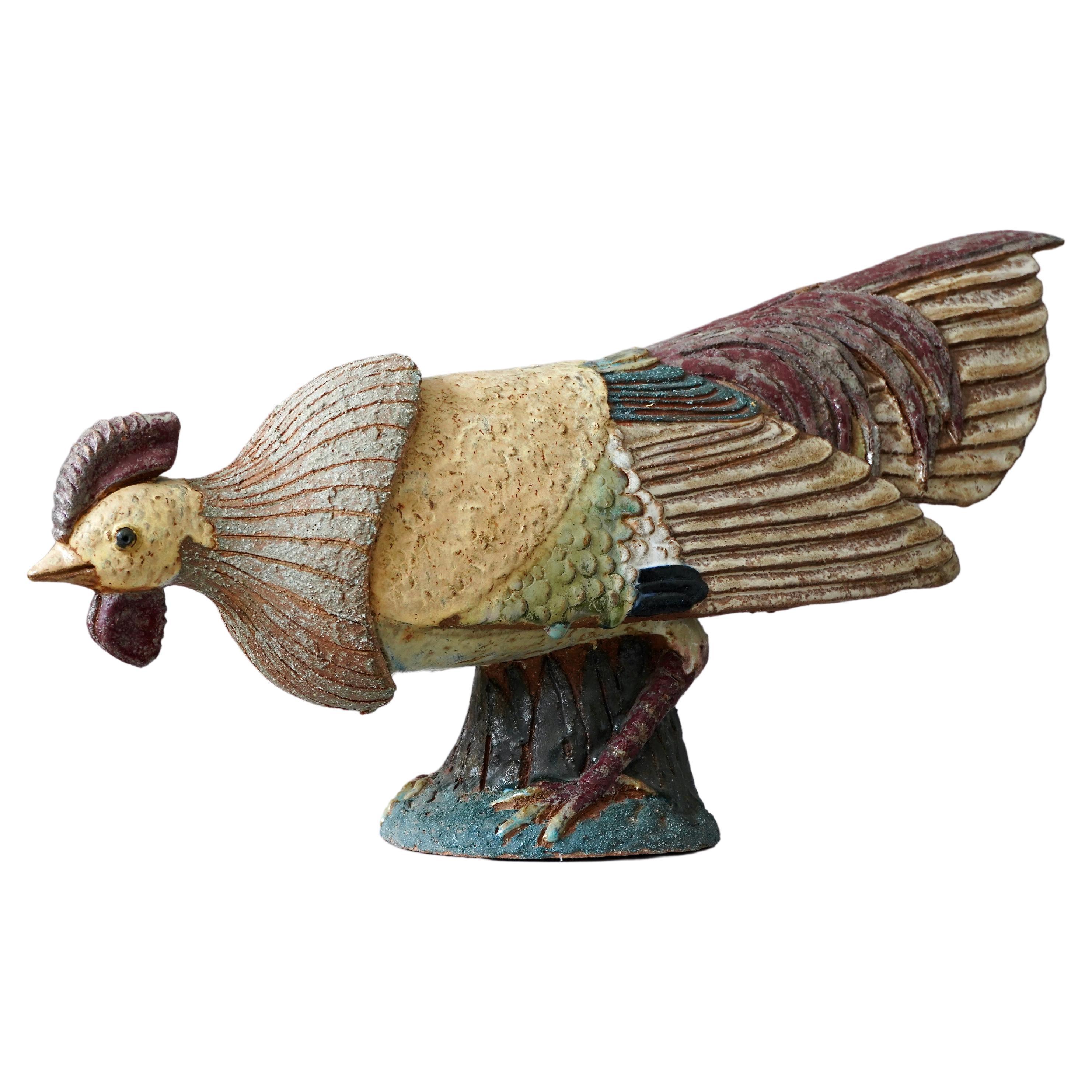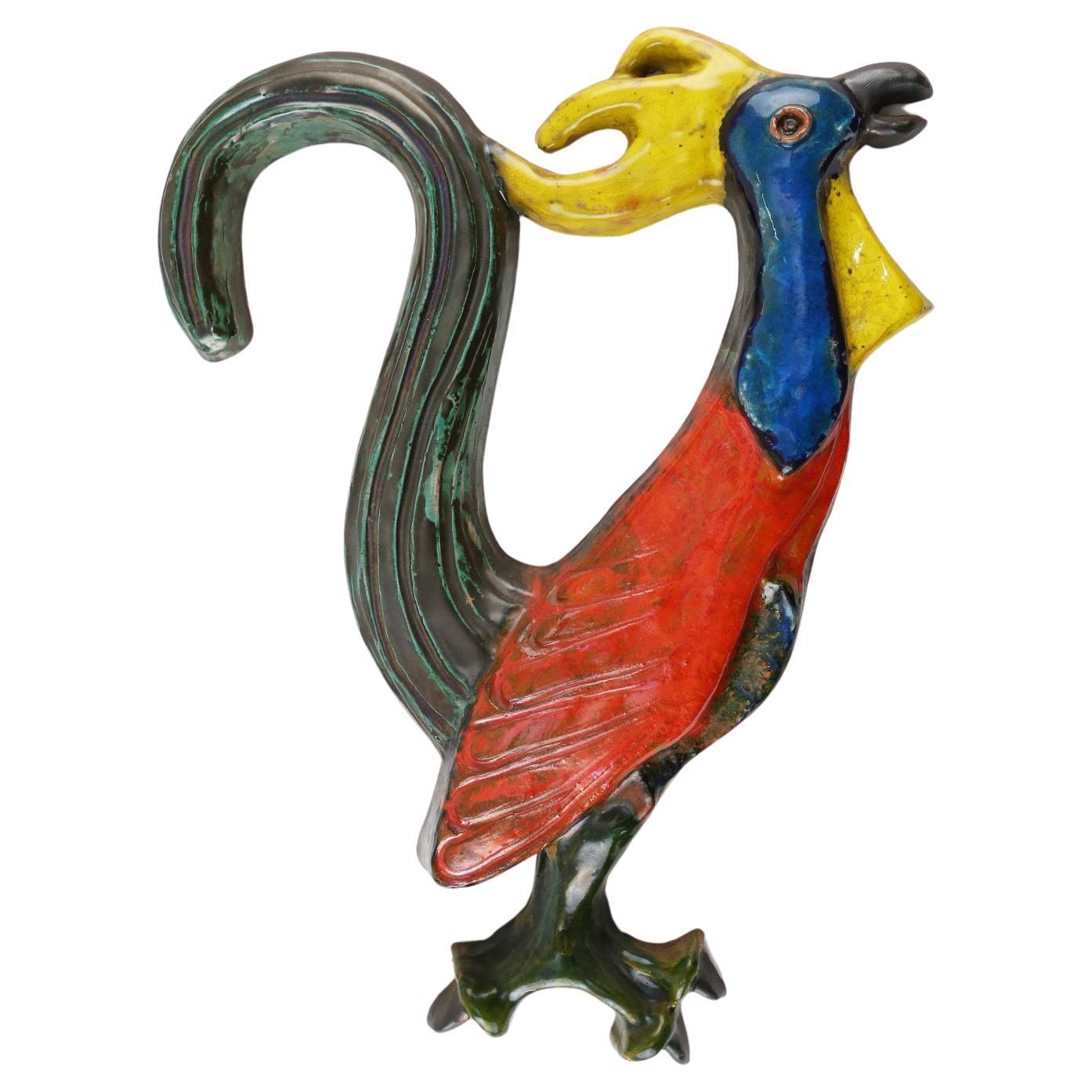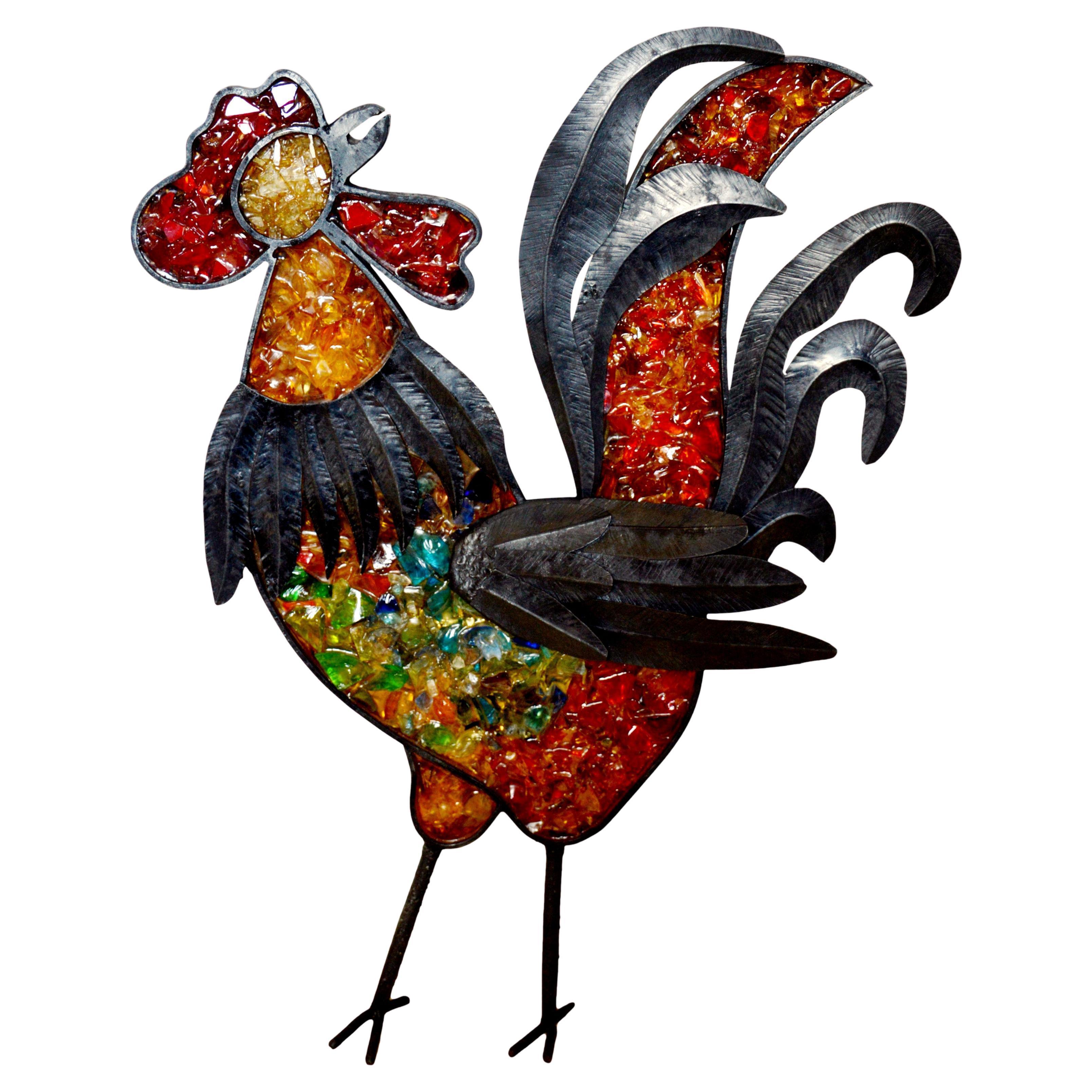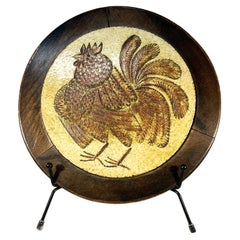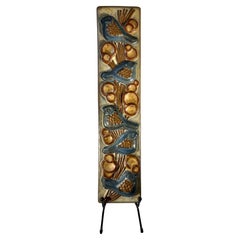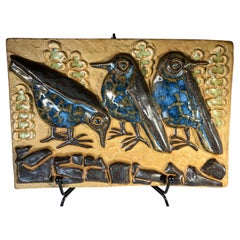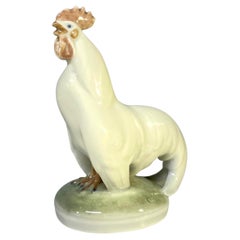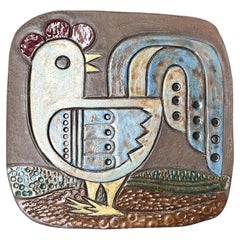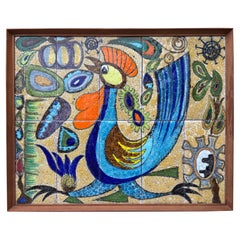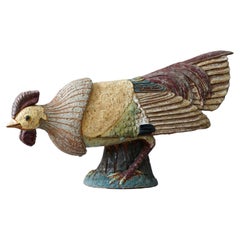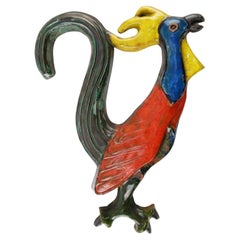Items Similar to Rooster By Marianne Starck For Michael Andersen. Danish Wall Plaque
Want more images or videos?
Request additional images or videos from the seller
1 of 9
Rooster By Marianne Starck For Michael Andersen. Danish Wall Plaque
$622.41
£450
€529.07
CA$859.54
A$943.12
CHF 493.58
MX$11,606.57
NOK 6,218.41
SEK 5,824.47
DKK 3,950.54
About the Item
Bold rooster wall plaque by Marianne Starck for Michael Andersen, Denmark
Wonderfully hand crafted by the renowned Danish ceramicist
Stamped MS, Three Herrings mark, and #6071 on reverse
Width 5.5inch, Height 7 inch, Depth 1 inch
Weight 1lb 7oz
In excellent condition.
Wear consistent with age and use
- Creator:Marianne Starck (Designer)
- Dimensions:Height: 7 in (17.78 cm)Width: 5.5 in (13.97 cm)Depth: 1 in (2.54 cm)
- Style:Mid-Century Modern (Of the Period)
- Materials and Techniques:Ceramic,Glazed
- Place of Origin:
- Period:
- Date of Manufacture:1960s
- Condition:Wear consistent with age and use.
- Seller Location:Rothley, GB
- Reference Number:1stDibs: LU5055139747992
About the Seller
5.0
Vetted Professional Seller
Every seller passes strict standards for authenticity and reliability
Established in 2019
1stDibs seller since 2019
187 sales on 1stDibs
Typical response time: 7 hours
- ShippingRetrieving quote...Shipping from: Rothley, United Kingdom
- Return Policy
Authenticity Guarantee
In the unlikely event there’s an issue with an item’s authenticity, contact us within 1 year for a full refund. DetailsMoney-Back Guarantee
If your item is not as described, is damaged in transit, or does not arrive, contact us within 7 days for a full refund. Details24-Hour Cancellation
You have a 24-hour grace period in which to reconsider your purchase, with no questions asked.Vetted Professional Sellers
Our world-class sellers must adhere to strict standards for service and quality, maintaining the integrity of our listings.Price-Match Guarantee
If you find that a seller listed the same item for a lower price elsewhere, we’ll match it.Trusted Global Delivery
Our best-in-class carrier network provides specialized shipping options worldwide, including custom delivery.More From This Seller
View AllSplendid Roger Capron Rooster Framed Ceramic Tile Plaque - For Vallauris, France
By Roger Capron
Located in Rothley, Leicestershire
A boldly strutting rooster fills a framed ceramic tile from Roger Capron for Vallauris, France
Dark wood framed tile with cream background and dark brown detailed etching
Circa 1970...
Category
Mid-20th Century French Mid-Century Modern Ceramics
Materials
Ceramic
Flock Of Birds By Marianne Starck For Michael Andersen. Danish Wall Plaque
By Marianne Starck
Located in Rothley, Leicestershire
Charming gathering of five small birds wall plaque, by Marianne Starck for Michael Andersen, Denmark
Muted blue glaze with brown highlights on stonew...
Category
Mid-20th Century Danish Mid-Century Modern Decorative Art
Materials
Ceramic
Trio Of Birds By Marianne Starck For Michael Andersen. Danish Wall Plaque
By Marianne Starck
Located in Rothley, Leicestershire
Trio of birds wall plaque, by Marianne Starck for Michael Andersen, Denmark
Amusing trio glazed with blue, green and brown over stoneware
Stamped MS...
Category
Mid-20th Century Danish Mid-Century Modern Decorative Art
Materials
Ceramic
Christian Thomsen, Royal Copenhagen Art Nouveau 1923 Porcelain Cock Rooster
By Royal Copenhagen
Located in Rothley, Leicestershire
Christian Thomsen for Royal Copenhagen porcelain cockerel figurine.
Created in 1923, a classic collectible piece.
Signed and numbered 1126.
circa 1923.
Measures: height 4.25 inch...
Category
Early 20th Century Danish Art Deco Animal Sculptures
Materials
Porcelain
Christian Thomsen, Royal Copenhagen Art Nouveau 1923 Foraging Cockerel #1127
By Royal Copenhagen
Located in Rothley, Leicestershire
Christian Thomsen for Royal Copenhagen porcelain foraging cockerel figurine.
Created in 1923, a classic collectible piece
Signed and Numbered 1127
circa 1923
Measures: height 4 ...
Category
Early 20th Century Danish Art Deco Animal Sculptures
Materials
Porcelain
Bluebirds Trio By Marianne Starck For Michael Andersen. Danish Wall Plaque
By Marianne Starck
Located in Rothley, Leicestershire
Bluebirds trio wall plaque, by Marianne Starck for Michael Andersen, Denmark
Engaging blue glazed birds on stoneware plaque
Stamped MS, Three Herrings mark and #6267 on reverse
Widt...
Category
Mid-20th Century Danish Mid-Century Modern Decorative Art
Materials
Ceramic
You May Also Like
Mid-Century Pottery Wall Plaque with Chicken Rooster Decor, 1960s
Located in Hamburg, DE
Mid-Century Pottery Wall Plaque with Chicken Rooster Decor, 1960s, in Very Good conditions. Designed 1960 to 1969.
Additional information:
Materials: Ceramic
Style: Mid-Century Mode...
Category
20th Century Mid-Century Modern Decorative Art
Materials
Ceramic
Framed Ceramic Rooster Art Tile Plaque, French, 1950's
Located in Philadelphia, PA
Framed Ceramic Art Tile Plaque
of Whimsical and Colorful Rooster
French, 1950's, signed
"Beautifully done Ceramic Tile Rooster Wall Hanging. Made up of 10 tiles to form the compos...
Category
Vintage 1950s French Mid-Century Modern Decorative Art
Materials
Ceramic
Large and Unique Stoneware Rooster by Tyra Lundgren. Sweden, 1955.
By Tyra Lundgren Carolina
Located in Malmö, SE
A stunning and unique stoneware rooster sculpture with amazing glaze.
Made by Tyra Lundgren. Executed in her own studio in Sweden, 1955.
Great condition, but with a couple of chips to the base (pictured).
Signed by the artist in two places, and dated 1955-06-20.
Provenance: bought from the estate of the artist in 1979.
Tyra Lundgren (1897-1979) was one of the most multifaceted artists and modernists of the twentieth century. She was a painter, drawer, sculptor, ceramist, glass- and textile designer, as well as an author and an art critic. She was the first woman who designed glass for Paolo Venini at Murano in Venice and she also served as the artistic leader at Arabia in Helsinki at a time when men tended to hold those kinds of positions.
Tyra Lundgren grew up in Djursholm, near Stockholm. Her parents were John Petter Lundgren, professor at Veterinärinstitutet (institute of veterinary sciences) in Stockholm, and Edith Lundgren née Åberg, who was a housewife and raised their six children. The bourgeois home also comprised a nanny and a female cook. The family were very socially active, travelled often, and enjoyed the outdoor lifestyle. Tyra Lundgren’s schooling began at Djursholm coeducational school, where her teachers included Natanael and Elsa Beskow and Alice Tegnér. Her school friends included Greta Knutson-Tzara, Stellan Mörner, and Ingrid Rydbeck-Zuhr.
Tyra Lundgren knew from the time she was five years old that she wanted to be an artist. She first became aware of the profession through Axel Fahlcrantz, who rented a studio on the plot of land where she lived with her family. In 1913 she began to attend Högre konstindustriella skolan (HKS, now known as Konstfack, college of arts, crafts and design) where she studied decorative art as well as handicrafts in various forms until 1917. One of her fellow students and friends there was Estrid Ericson, who later founded Svenskt Tenn AB in 1924. Whilst attending HKS Tyra Lundgren also took painting lessons at the Althin school of painting. In 1917 she was accepted as a candidate at the Royal Swedish Academy of Fine Arts where, apart from breaks during which she undertook studies abroad, she remained until 1922. She spent a couple of months taking lessons from Anton Hanak in Vienna and from 1920–1923 she was a student of André Lhote in Paris.
Tyra Lundgren was primarily active in four countries: Sweden, Finland, France, and Italy. She spent much of her professional life travelling and considered herself to be a European. Greece and Mexico also formed important centres in her artistic life, as did the USA. She had an extensive social network which included focal individuals within twentieth century-European and American artistic and cultural circles.
Tyra Lundgren’s main artistic motifs were birds, fish, and people which she depicted through different techniques and materials. Her artistic expression involved a variety of different directions and styles. She was a pioneer of the 1920s Swedish Grace style, the name of which had been coined by the art critic Morton Shand at the Stockholm Exhibition of 1930. This was a Swedish Art Deco style, characterised by elegance and traditional art which contrasted with the current artistic ideals of functionalism.
Tyra Lundgren made her debut at a group exhibition held at Kungliga Akademien för de fria konsterna in 1921. She went on to show her work at various exhibitions throughout the 1920s. After that period she only very rarely exhibited her paintings.
Tyra Lundgren’s painted output can be divided into different periods or stylistic directions. The first of these, and the most extensive, was her post-Cubist period which began in 1920 on her arrival in Paris. Her paintings from this time and right up to the mid-1930s typically comprise portraits, self-portraits, live-model painting, still-lifes, interiors, and landscapes in the Cubist style. Many of the great number of self-portraits she painted were produced in the New Objective style, displaying broad variation in terms of clothes, poses and techniques. Two of these – Huvud med vit duk and Självporträtt both from 1921 – can be seen at Moderna Museet in Stockholm, although the majority of these works are at Gotlands Museum.
Tyra Lundgren’s second artistic period comprises the years of 1927 to 1929 and is characterised by the New Objective style inspired by medieval techniques and materials (Giotto, Piero della Francesca). Her motifs were still-lifes and landscapes. At this point she was living in Rome and was close to the circle involved in the Valori plastici: rivista d’arte art journal. This period saw a breakthrough in her development as a painter. From the 1950s through the 1970s her work can almost be described as belonging to the Concrete style. Using light pastel colours her paintings sought light in a sometimes non-figurative expression, but often depicting abstract bird-shapes or other nature-inspired imagery. Her paintings from this period are outsized and display powerful colours, in yellows, reds, and blues.
Tyra Lundgren maintained a constant production of drawings, both in terms of individual artworks and sketches for patterns and designs. She also produced the illustrations for her book Fagert i Fide. Årstiderna på en gammal gotlandsgård, published in 1961. During her early years she also produced advertising illustrations. She spent the final years of her life primarily working with lithographs which were printed at Galleri Prisma and depicted images of doves, swallows, magpies and crows.
Tyra Lundgren is meanwhile best known for her work as a ceramist and in this sphere she was one of Sweden’s leading exponents. She worked in the porcelain industry as a designer and as an artisan and ceramic sculptor. Her first job was at St Eriks Lervarufabrik in Uppsala from 1922–1924, she then worked at Arabia from 1924–1937, and at Rörstrand and Lidköping Porslinsfabrik. She was the artistic leader at Arabia ahead of the 1930 Stockholm Exhibition and she exhibited her work at the World’s Fairs. During the 1934–1938 period she was connected to the Manufacture nationale de Sèvres porcelain factory in Paris.
Tyra Lundgren was a pioneer when it came to giving ceramic art a public space in Sweden. She produced around 20 outsized reliefs in stoneware, so-called monumental reliefs. One of these is Märkeskvinnor, from 1947, for the former girls’ school at Bohusgatan in Stockholm. From the 1940s onwards Tyra Lundgren produced sculptural objects in Chamotte clay and stoneware, with various glazings. Her small birds are well-known and popular with many. When her ceramic efforts became too much for her during the 1970s she then produced models for sculptures in bronze. There are six of these in various places around the globe, including Solfågel in Almedalen, Visby.
Tyra Lundgren began to work as a glassware designer at Moser in Karlsbad in 1922 where she designed new table services and modernised older ones. She also worked freelance for Riihimäki factory in Finland during the 1924–1929 period. From 1934 to 1938 she was employed by Kosta glass factory where she mainly designed thick-walled bowls and vases, engraved with classical motifs. She was introduced to the glassmaker Paolo Venini at Murano during the Triennale di Milano of 1936 and they began a collaboration that lasted into the 1950s. As part of this collaboration Tyra Lundgren became the first woman to design glassware and, in conjunction with the glassblower Arturo Biasutto, she developed new techniques of glass production. Her motifs at this point were birds, fish, snail-shaped designs and leaf-patterned bowls using traditional techniques as well as in new designs. It was during this time that she created the so-called tissue-shaped bowls and it remains unclear as to who specifically came up with the design but Tyra Lundgren claimed it was of her making.
Tyra Lundgren was active as textile designer for Licium (now HV Licium), the sacred textiles...
Category
Mid-20th Century Swedish Scandinavian Modern Animal Sculptures
Materials
Ceramic, Stoneware
Vintage Ceramic plaquette of a colorful Rooster signed A. Dandoy, Belgium 1960s
Located in Meulebeke, BE
Belgium / 1962 / Plaquette / A. Dandoy / ceramics / Vintage / Mid-century
Beautiful ceramic wall plaquette of a rooster in powerful red, blue, yellow and green glaze. Signed at the ...
Category
Vintage 1960s Belgian Mid-Century Modern Animal Sculptures
Materials
Ceramic
Spectacular French Mid-century "Rooster" Wall Light Sculpture, ca. 1970
Located in Saint-Amans-des-Cots, FR
Great decorative power. Spectacular wall light in glass mosaic, resin and wrought iron, France, ca.1970. Rooster. Large and very decorative. Height : 34.25"(87cm), Width : 25"(63.5cm...
Category
Vintage 1970s French Mid-Century Modern Wall Lights and Sconces
Materials
Wrought Iron
Midcentury Swedish Brutalist Rooster as Fire Screen Olle Hermansson, Husqvarna
By Husqvarna, Olle Hermansson
Located in Stockholm, SE
Midcentury Swedish Brutalist fire screen of a "Firerooster" by Olle Hermansson for Husqvarna. In cast iron. Olle Hermansson was interested in Nordic myt...
Category
Vintage 1960s Swedish Mid-Century Modern Animal Sculptures
Materials
Iron
More Ways To Browse
Buffon Monkey
California Art Tile
Christine Viennet
Cigarette Tins Vintage
Enamel On Copper Wall Art Walnut
Enameled Wall Tile
Enchanted Woodland
Evelyn Ackerman Tile
Framed Hermes Scarves
French Zinc Letters
Grand Tour Medallions
Judith Daner Enamel
Leon Brard
London Underground Signs
Mayan Wall Art
Metal Bridge Wall Art
Mexican Wall Plates
Pantou Ceramics
